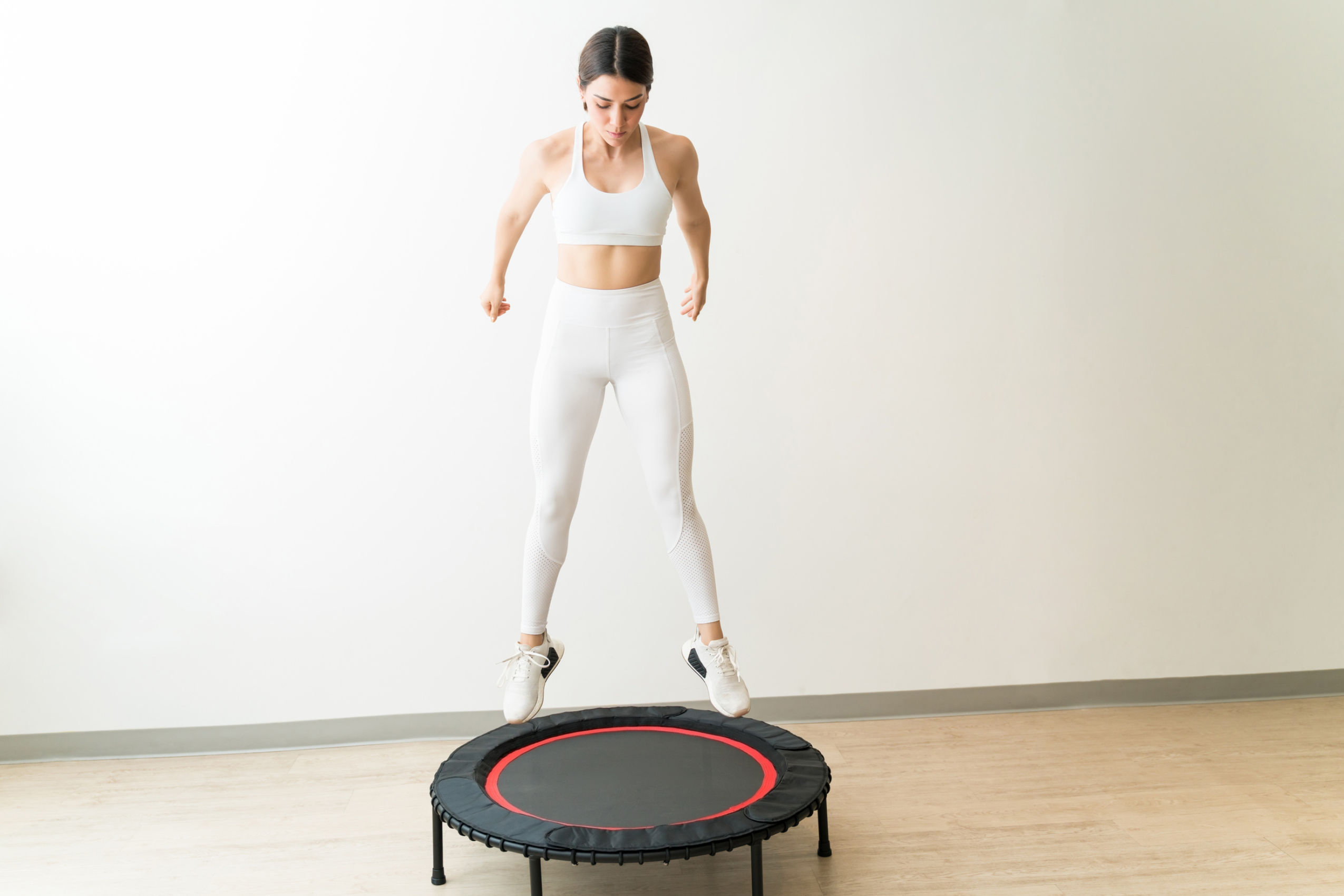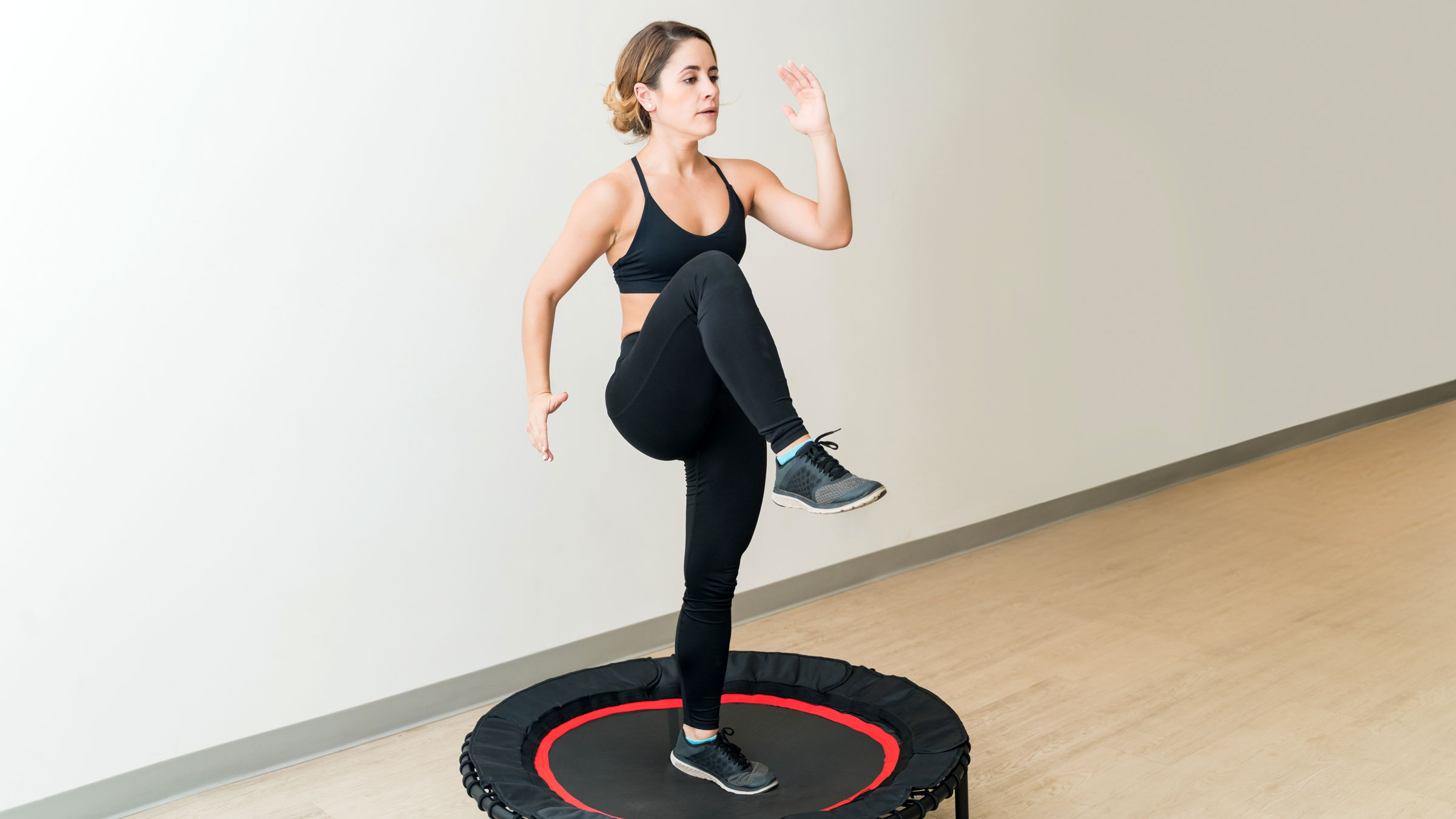Jumping on a trampoline gives your body and mind many good things. It is an easy workout that is gentle on your joints. People of all ages and fitness levels can do it safely. Bouncing is better for you than hard exercises that might cause injuries. If you use a trampoline often, you will get healthier in lots of ways. This post talks about 14 ways trampolines make you healthier and better at sports. You can burn calories, help your balance, lift your mood, and more while having fun jumping! Read this to learn all the great things bouncing on trampolines does for your body.

Contents
14 Benefits of Trampoline Exercise
Trampoline exercise offers a range of benefits that can enhance your overall fitness and well-being. Whether you’re a seasoned fitness enthusiast or just starting your fitness journey, incorporating trampoline exercises into your routine can be a game-changer. Here are 14 key benefits of trampoline exercise that you should know:
- Improved cardiovascular fitness: Jumping on a trampoline is a fun and effective way to boost your heart rate and improve cardiovascular health.
- Increased muscle strength: The repetitive bouncing and landing on a trampoline engages and strengthens multiple muscle groups, including your legs, core, and arms.
- Weight loss: Trampoline exercise can burn a significant amount of calories, helping you shed unwanted pounds and achieve your weight loss goals.
- Stress relief: Bouncing on a trampoline releases endorphins, which can reduce stress and improve your overall mood.
- Low impact activity: Unlike high-impact exercises like running, trampoline exercise is gentle on your joints, reducing the risk of injury.

- Improved balance and coordination: The constant movement and need to maintain balance on a trampoline can improve your overall balance and coordination skills.
- Enhanced lymphatic system: Rebounding on a trampoline helps stimulate the lymphatic system, which plays an important role in immune system function.
- Increased bone density: The impact of landing on a trampoline helps strengthen bones and can contribute to better bone density over time.
- Improved body awareness: Trampoline exercise requires you to be aware of your body’s movements and position in space, enhancing body awareness.
- Fun and enjoyable: Trampoline exercise is not only beneficial for your physical health but also provides a fun and enjoyable way to stay active.
- Versatility: From simple jumping to more advanced trampoline exercises, there are endless possibilities to challenge and diversify your workouts.
- Convenience: If you have limited space or prefer to exercise at home, mini trampolines offer a convenient option for trampoline workouts.
- Family-friendly: Trampolines are loved by both kids and adults, making it a great activity for the whole family to enjoy together.
- Improved mental focus: The rhythmic bouncing on a trampoline can help improve mental focus and concentration.
What’s the best way to start rebounding?
If you’re new to trampoline exercise or rebounding, it’s important to start slowly and gradually increase your intensity. Here are some tips to get you started:

- Warm up: Before you hop on the trampoline, it’s essential to warm up your body. Perform dynamic stretches like arm circles, leg swings, and hip rotations to loosen up your muscles and joints.
- Basic Trampoline Bounce: This is an excellent exercise to begin with. Here’s how to do it:
- Jumping Jacks: Once you’re comfortable with the basic bounce, you can progress to more dynamic movements like jumping jacks. Follow these steps:
- Explore Different Exercises: Once you’ve mastered the basics, don’t be afraid to try out different exercises on the trampoline. You can incorporate variations like high knees, butt kicks, squats, or even dance moves to make your workouts more enjoyable and challenging.
Running Vs Trampoline?
When it comes to choosing an exercise routine, running and trampoline workouts are popular options. Both activities offer various benefits, but there are also significant differences between them. Let’s compare running and trampoline exercise to help you decide which one is right for you.
1. Impact on Joints and Injury Risk:
Running involves repetitive impact on your joints, which can lead to orthopedic injuries and joint pain. On the other hand, trampolining absorbs some of the shocks, resulting in less impact on your knees, feet, hips, and spine. The NASA study mentioned earlier found that pressure is more evenly distributed on a trampoline, reducing the risk of injury. Switching to trampoline workouts can provide natural pain relief and help you avoid common running injuries.
2. Aerobic Exercise and Cardiovascular Health:
Both running and trampolining offer aerobic exercise, which strengthens the heart and improves overall cardiovascular health. However, studies have shown that the work required to perform trampoline exercise at equivalent levels of effort is significantly greater than that of running. This means that trampoline workouts can provide impressive aerobic benefits, making it an excellent choice for weight loss and improving fitness levels.
3. Bone Health:
Repeated jumping on a trampoline puts your bones under slight stress at regular intervals, leading to improved bone density. This can help prevent bone disorders like osteoporosis later in life. In contrast, running carries a higher risk of impact-related bone injuries.
Frequently Asked Questions
How long should I trampoline a day to lose weight?
To achieve weight loss, it is advised to do trampoline bouncing between 30 to 45 minutes a day. The average aim should be to achieve a 500-calorie deficit per day, which can help you lose one pound by the end of the week.
Are trampoline workouts effective?
Trampolining is an effective low-impact exercise that reduces the likelihood of chronic injuries. Research suggests that rebounding can be more effective at burning calories compared to other exercises like running. It also helps reduce stress levels.
What are the disadvantages of a trampoline?
While trampolining has numerous benefits, there are potential risks to consider. Jumping repeatedly on a trampoline can lead to sprains, fractures, and injuries, especially if you land awkwardly. Lower extremity injuries are the most common type of trampoline injury, accounting for nearly 35% of cases.

Hello, I’m Ravindra. Over the years, I’ve immersed myself deeply into the world of fitness and health, transforming both my body and mind. Writing has allowed me to share my journey, insights, and expertise with those just starting out and seasoned fitness enthusiasts alike. Beyond just routines and diets, I believe in inspiring others to adopt a holistic approach to well-being.
